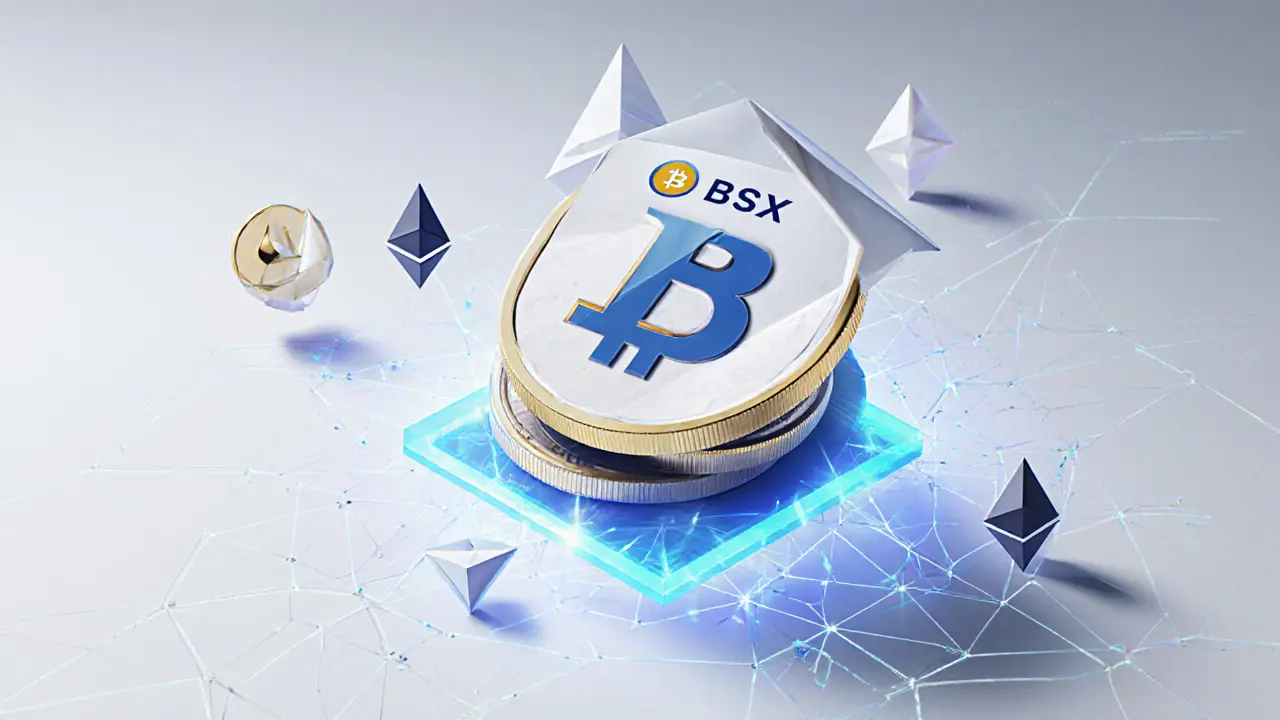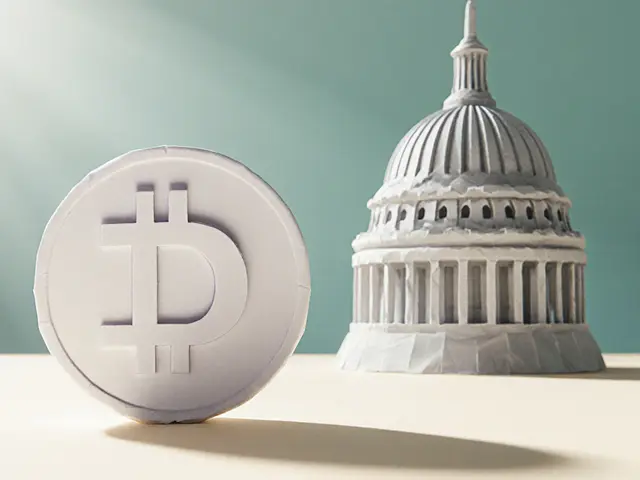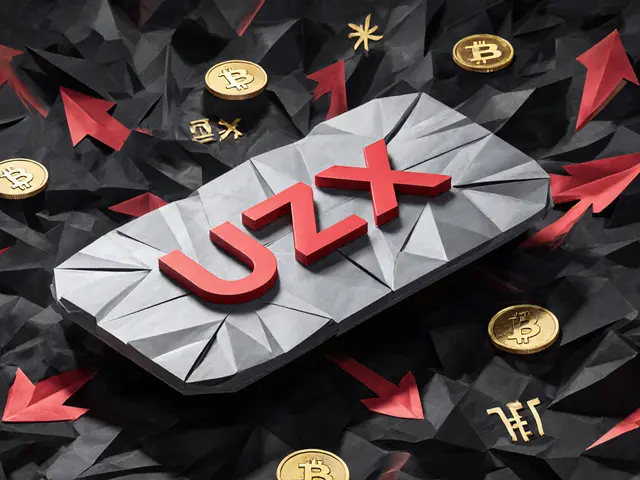BSX Staking Calculator
Calculate Your BSX Staking Rewards
Based on current staking APY of 14.5% (as of March 2025), calculate how much BSX you could earn.
Your Estimated Rewards
Enter your BSX amount and staking duration to see your potential rewards.
Important Note: BSX staking rewards are currently calculated at 14.5% APY as reported by the protocol. Actual rewards may vary based on trading volume, protocol fees, and token supply dynamics. There's no lock-up period so you can unstake at any time.
BaseX (BSX) isn’t just another crypto token. It’s the engine behind one of the fastest-growing decentralized exchanges for perpetual futures trading on the Base chain. Launched in early 2025, BSX Protocol was built by a team with deep roots at Coinbase, Kraken, and FalconX - and backed by Blockchain Capital. Within four months, it hit $4 billion in trading volume, making it the top perpetual DEX on Base. But what does that actually mean for someone trying to understand if BSX is worth their time?
What Exactly Is BSX?
BSX is the native token of BSX Protocol, a decentralized exchange that lets users trade perpetual futures - contracts that mimic the price of assets like Bitcoin or Ethereum without an expiration date. Unlike centralized exchanges like Binance or Coinbase, BSX runs entirely on-chain using smart contracts on Base, an Ethereum Layer 2 network built to handle fast, cheap transactions.
What makes BSX stand out is how it works. Most DEXs use automated market makers (AMMs), which can lead to slippage and poor execution at high leverage. BSX uses a central limit order book (CLOB), the same system used by top centralized exchanges. But here’s the twist: order matching happens off-chain for speed, while settlements happen on-chain for security. This hybrid model delivers 10ms trade execution - ten times faster than most competitors - without sacrificing decentralization.
How Does BSX Token Work?
The BSX token has three clear roles:
- Governance: Token holders vote on protocol upgrades, fee structures, and new features. If you hold BSX, you get a say in where the platform goes.
- Staking: You can lock up your BSX to help secure the network. In return, you earn rewards - currently up to 14.5% APY since the staking program launched in March 2025.
- User Rewards: Traders and liquidity providers get paid in BSX for using the platform. The more you trade or provide liquidity, the more tokens you earn.
There’s a total supply of 998 million BSX tokens, with about 189 million in circulation as of October 2024. That gives it a market cap of roughly $183,520 at the time - small compared to giants like UNI or MKR, but growing fast.
Why Base Chain Matters
BSX doesn’t run on Ethereum mainnet or Solana. It’s built specifically for Base, the Layer 2 chain backed by Coinbase. This isn’t an accident. Base has access to over 110 million Coinbase users - a massive potential user base most DeFi projects can only dream of.
Base’s infrastructure means low fees (often under $0.01 per trade) and high throughput. That’s critical for perpetual futures, where traders need to open and close positions quickly, especially when using 100x to 1000x leverage. BSX leverages this to offer near-gasless trading - something you won’t find on older DEXs like dYdX on Ethereum mainnet.

How BSX Compares to Other Perpetual DEXs
BSX isn’t the only player in the space. But it’s carving out a niche:
| Platform | Trading Volume on Base | Latency | Leverage Max | Token Utility |
|---|---|---|---|---|
| BSX | $33.3M daily | 10ms | 1000x | Governance, staking, rewards |
| Hyperliquid | $9.2M daily | 150ms | 100x | Staking only |
| Kwenta | $3.7M daily | 300ms | 50x | Governance, fee discounts |
BSX dominates Base’s perpetual futures market with 78% share, according to Blockchain Capital’s February 2025 report. It’s ahead of Hyperliquid and Kwenta by a wide margin. But outside of Base? It’s not cross-chain like dYdX or GMX. That’s its biggest limitation - it’s locked into one ecosystem.
Real User Experiences
People who use BSX have strong opinions.
On Reddit and Bitget reviews, traders praise the speed. One user wrote: “10ms execution during a Bitcoin pump - I’ve never seen that on a DEX.” Another said: “1000x leverage works smoothly. No lag, no failed orders.”
But there’s a flip side. Many users complain that BSX’s token feels underutilized. “It’s just for voting and staking,” said one Reddit user. “No discounts, no airdrops, no burn mechanism. Feels like an afterthought.”
Price volatility is another issue. In March 2025, BSX dropped 55.89% in just 24 hours. That kind of swing triggered margin calls for leveraged traders. If you’re holding BSX as a long-term investment, this kind of movement is risky.
Who Should Use BSX?
BSX is ideal for traders who:
- Already use Base chain or Coinbase
- Want high-leverage perpetual futures with low fees
- Prefer order-book trading over AMMs
- Don’t mind being locked into one L2 ecosystem
It’s not for everyone. If you want cross-chain access, dYdX or GMX are better. If you’re looking for a token with strong utility beyond staking, BSX isn’t there yet. And if you’re risk-averse, the 1000x leverage and token volatility make it a poor fit.

What’s Next for BSX?
The roadmap is aggressive:
- Q2 2025: Launch of a spot trading aggregator - letting users swap tokens directly on the platform.
- Q3 2025: BSX Earn, a yield vault system for staking assets like ETH or USDC.
- 2025-2026: Potential institutional partnerships. Blockchain Capital confirmed talks with “three major traditional finance firms.”
Industry analysts predict the Base chain perpetual futures market could hit $45 billion monthly volume by end of 2025. If BSX keeps its 78% share, it could process over $35 billion per month - a massive scale for a DEX.
But risks remain. The SEC’s lawsuit against dYdX in March 2025 raised red flags for all perpetual DEXs. If regulators target leverage trading, BSX could face legal pressure. Also, its entire value depends on trading volume. If users stop trading, the token’s rewards and staking yields could collapse.
How to Get Started
Getting into BSX is simple:
- Get a Web3 wallet like MetaMask.
- Buy some ETH and swap it for BASE tokens on Coinbase or QuickSwap.
- Connect your wallet to bsx.finance (official site).
- Deposit collateral (USDC, ETH, etc.) and start trading perpetuals.
You can start with as little as $10. The interface is clean and familiar - similar to trading on Binance or Bybit. BSX’s tutorial has a 68% completion rate, meaning most users get comfortable within 20-30 minutes.
Support is decent. Their Discord has over 12,000 members, and email response time averages 2.3 hours. Their knowledge base has 87 articles, updated weekly.
Final Thoughts
BSX is a bold experiment. It’s not trying to be everything to everyone. It’s focused on one thing: making high-performance, low-cost perpetual futures trading accessible on Base chain. And so far, it’s working.
The token itself? It’s still early. Right now, its value is tied to trading volume, not utility. If BSX adds more features - like fee discounts, NFT integrations, or cross-chain bridges - its token could become more valuable. Until then, it’s a speculative play on the growth of Base and the demand for decentralized leverage trading.
If you’re already in the Base ecosystem and want to trade futures without paying exchange fees or dealing with KYC, BSX is worth testing. Just don’t expect it to be a store of value. It’s a tool - and like any tool, its worth depends on how you use it.
Is BSX a good investment?
BSX isn’t a traditional investment like Bitcoin or Ethereum. Its value is tied to trading volume on the BSX Protocol. If trading grows, the token could rise - but if volume drops, staking rewards and demand could fall sharply. It’s better seen as a utility token for active traders than a long-term store of value.
Can I stake BSX right now?
Yes. BSX launched its staking program on March 10, 2025. You can stake your tokens directly through the BSX app and earn up to 14.5% APY. Rewards are paid out daily in BSX tokens. There’s no lock-up period, so you can unstake anytime.
What’s the difference between BSX and dYdX?
dYdX is cross-chain and has been around longer, with more features and higher overall volume. But it runs on Ethereum mainnet and Layer 2s like StarkNet, which can mean higher fees and slower execution. BSX is limited to Base chain, but offers faster speeds (10ms vs. 100-500ms), lower fees, and deeper liquidity at high leverage levels - making it better for active traders on Base.
Is BSX safe to use?
The protocol has been audited and runs on Base, a well-supported Ethereum L2. But like all DeFi platforms, you’re exposed to smart contract risk. Also, using 1000x leverage can lead to instant liquidations if the market moves against you. Never risk more than you can afford to lose.
Where can I buy BSX?
BSX is available on major decentralized exchanges like Uniswap and QuickSwap, and centralized exchanges including Gate.io and Bitget. Always verify the contract address: 0xd5046b976188eb40f6de40fb527f89c05b323385. Never send funds to unofficial sites.





James Edwin
BSX is the real deal if you're already on Base. 10ms execution during a Bitcoin dump saved my position when everything else was lagging. No centralized exchange comes close to this kind of speed on-chain.
Kris Young
I've been staking BSX since March, and the 14.5% APY is solid. But I agree with the post: the token feels underutilized. Where are the fee discounts? The burn mechanism? It's just staking and voting. That's not enough for long-term value.
LaTanya Orr
It's interesting how BSX is built for one ecosystem. Most crypto projects want to be everywhere. But BSX is like a specialist surgeon - incredibly skilled in one area, but useless outside the operating room. Maybe that's the future of DeFi: depth over breadth.